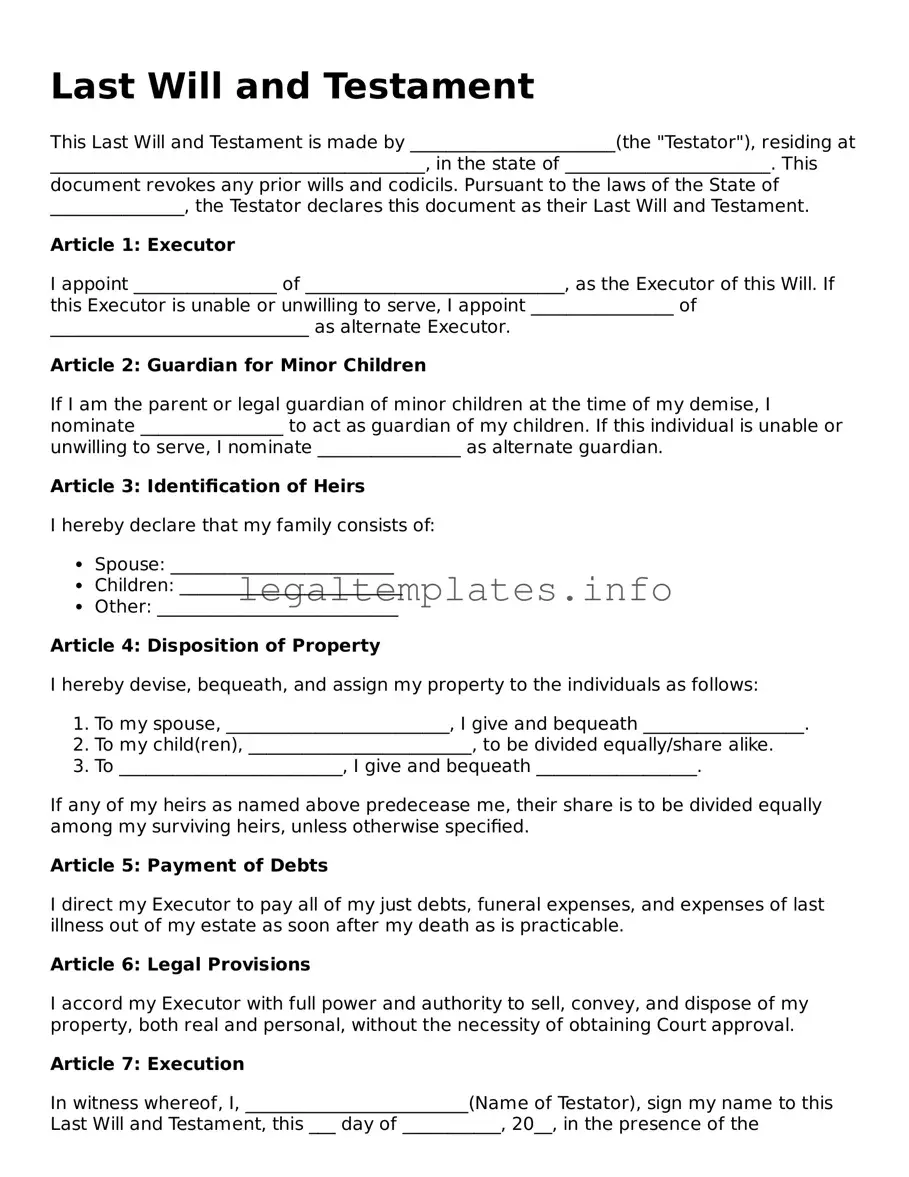Last Will and Testament
This Last Will and Testament is made by _______________________(the "Testator"), residing at __________________________________________, in the state of _______________________. This document revokes any prior wills and codicils. Pursuant to the laws of the State of _______________, the Testator declares this document as their Last Will and Testament.
Article 1: Executor
I appoint ________________ of _____________________________, as the Executor of this Will. If this Executor is unable or unwilling to serve, I appoint ________________ of _____________________________ as alternate Executor.
Article 2: Guardian for Minor Children
If I am the parent or legal guardian of minor children at the time of my demise, I nominate ________________ to act as guardian of my children. If this individual is unable or unwilling to serve, I nominate ________________ as alternate guardian.
Article 3: Identification of Heirs
I hereby declare that my family consists of:
- Spouse: _________________________
- Children: _________________________
- Other: ___________________________
Article 4: Disposition of Property
I hereby devise, bequeath, and assign my property to the individuals as follows:
- To my spouse, _________________________, I give and bequeath __________________.
- To my child(ren), _________________________, to be divided equally/share alike.
- To _________________________, I give and bequeath __________________.
If any of my heirs as named above predecease me, their share is to be divided equally among my surviving heirs, unless otherwise specified.
Article 5: Payment of Debts
I direct my Executor to pay all of my just debts, funeral expenses, and expenses of last illness out of my estate as soon after my death as is practicable.
Article 6: Legal Provisions
I accord my Executor with full power and authority to sell, convey, and dispose of my property, both real and personal, without the necessity of obtaining Court approval.
Article 7: Execution
In witness whereof, I, _________________________(Name of Testator), sign my name to this Last Will and Testament, this ___ day of ___________, 20__, in the presence of the undersigned witnesses, who witnessed and subscribed this will at my request, and in my presence.
_________________________
Signature of the Testator
______________Witness 1 Name: _____________________
______________Witness 2 Name: _____________________
State of _______________
County of _______________
On this ___ day of ___________, 20__, before me, _______________ (name and title of the officer), personally appeared _________________________, known to me (or satisfactorily proven) to be the person whose name is subscribed to the within Will and acknowledged that they executed the same for the purposes therein contained.
In witness whereof I hereunto set my hand and official seal.
_________________________
Signature of the Officer
